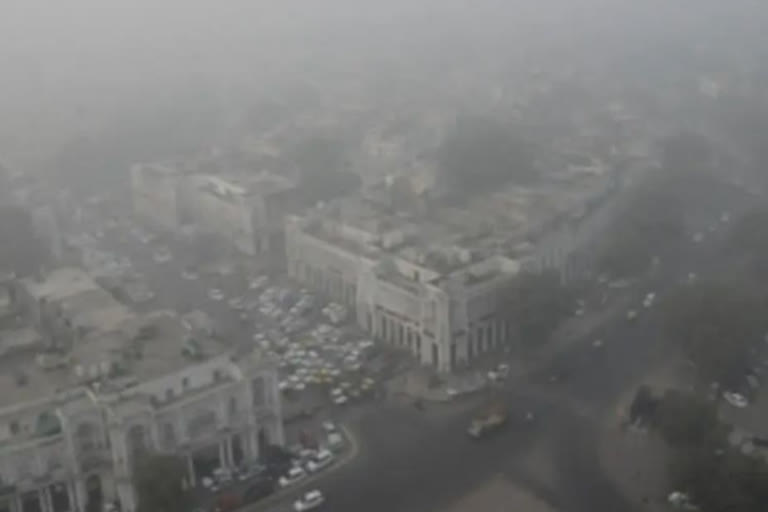New Delhi/Ghaziabad: Air pollution data released by the Central Pollution Control Board (CPCB) suggests another spike in Delhi's National Capital Region (NCR) pollution levels Monday. NCR's Air Quality Index (AQI) was 160, Ghaziabad 161, Noida 142 and Greater Noida 147.
Delhi's Anand Vihar area was in the Red Zone after it recorded an AQI of 376. According to the report, NCR's pollution begins to worsen from the first week of October almost every year. However, this year the pollution levels have begun to rise from mid-September. ITO, Delhi recorded an AQI of 193, NSI Dwarka, Delhi 187, Loni, Ghaziabad 214, Indrapur, Ghaziabad 159 and Sector 116, and Noida 173
It is pertinent to note that in 2021, air pollution in Delhi-NCR reached dangerous levels. Airborne particles of pollution may cause cardiovascular and respiratory diseases such as lung cancer. In India, air pollution kills more than a million people annually.
The report stated that fine particles (matter of less than 10 PM) present in the air, ozone, sulfur dioxide, nitric dioxide and carbon monoxide cause inflammation in the respiratory tract, allergies and damage lungs.
| AQI | Associated Health Impacts |
Good (0–50) | Minimal Impact |
Satisfactory (51–100) | May cause minor breathing discomfort to sensitive people. |
Moderately polluted (101–200) | May cause breathing discomfort to people with lung disease such as asthma, and discomfort to people with heart disease, children and older adults. |
Poor (201–300) | May cause breathing discomfort to people on prolonged exposure, and discomfort to people with heart disease |
Very Poor (301–400) | May cause respiratory illness to the people on prolonged exposure. Effect may be more pronounced in people with lung and heart diseases. |
Severe (401-500) | May cause respiratory impact even on healthy people, and serious health impacts on people with lung/heart disease. The health impacts may be experienced even during light physical activity. |
Suggested precautions
- Children, elderly and asthma patients should avoid taking a walk in the morning and evening.
- Always wear masks.
- Asthmatic patients should use inhaler frequently and should also take medicines on time.
- Citizens should regularly take hot water steams and they should also gargle with lukewarm water in case of sore throat.



